Androgyny,
homosexuality and cross-dressing in manga and anime (better
seen in 800 x 600)
Pisces Aphrodite, from Saint Seiya
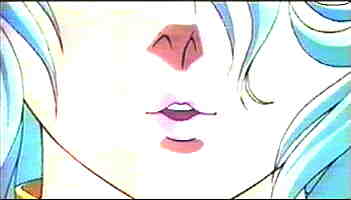
Very
often, in anime and manga, we come across a very pretty person, with fine
and delicate features, long hair, full lips, soft movements. While we think
about how pretty the young woman is and which of the heroes is going to
fall in love with her, we are just baffled to hear her voice and find out
that she... is a he! How many times didn’t it happen to me (and probably
to you too, dear reader)! The first time I saw Shun, from Saint Seiya
,
Kurama, from Yu Yu Hakusho , Marron and Mirufu-yui, from Bakuretsu
Hunter , only to mention a few, I was sure that they were women. But
it also happens the other way around: we see some small, lean boy, shorthaired
and with big eyes, a resolute expression and quick movements and only later
realize that...
it was a woman! One just has to think of Noa in Patlabor
or Haruka
in Sailor Moon S.And if this is not enough, think of those characters
that just have to go cross-dressing? Men who love to dress like women,
as Fisheye in Sailor Super Moon S
, or women who prefer the comfort
of masculine clothes, as Haruka/Sailor Uranus in Sailor Moon S ,
are relatively common in manga and anime, so that one starts distrusting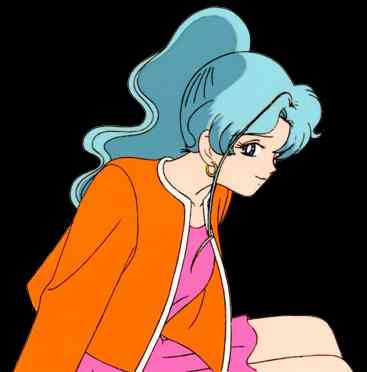 everyone and everything about the subject.
everyone and everything about the subject.
Fisheye, from Sailor Moon Super S - it is true, he is a boy!
After the initial shock, people soon adapt and think "well, they are just like this, let’s just disregard their gender and see what he/she is capable of". But a question remains: what is the matter with those crazy Japanese authors? After all, why do they insist on including those "queer" characters in manga and anime? Can it be that there are so many gay people in Japan?
Well, here it is necessary to distinguish clearly among three different things that, even if they often go hand in hand, are not the same: androgyny, homosexuality and cross-dressing.
Androgynous
is a person who has both masculine and feminine characteristics, that is,
you can’t say at first sight whether she/he is a man or a woman. The concept
of androgyny exists since antiquity: a Greek legend said that in the beginning
the human being was androgynous, neither man nor woman. Later, for some
reason I don’t know (err... I did not have time to check this out properly...),
it divided itself into two halves, one male and one female. However, each
one of the parts now was incomplete, and spent all its life trying
to find the other half in order to regain its former wholeness. 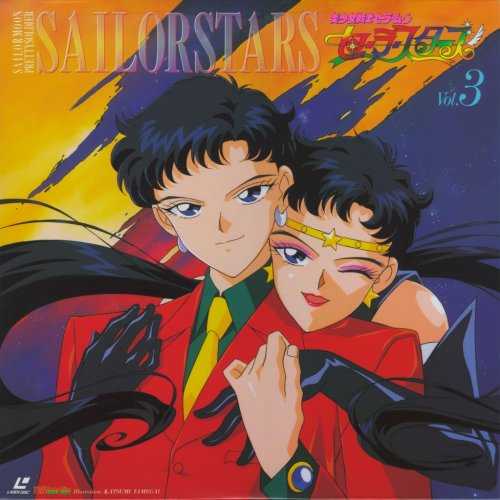 From this
legend come such expressions as "my better half" or "soul mate" and the
idea that each one of us has some other person who completes us walking
around out there. Besides that, there is also the psychological concept
that each person, regardless of gender, has both a feminine and a masculine
side in his/her personality.
From this
legend come such expressions as "my better half" or "soul mate" and the
idea that each one of us has some other person who completes us walking
around out there. Besides that, there is also the psychological concept
that each person, regardless of gender, has both a feminine and a masculine
side in his/her personality.
Seiya Kou from Sailor Moon Stars is
a man who turns into a woman when he changes into a Sailor Scout. He sure
has made contact with his feminine side!
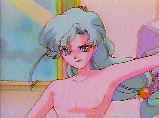 The
androgynous being is, therefore, highly intriguing: firstly, we are not
sure of how he/she will react, because he/she does not seem to fit into
any of the two "basic models" of behavior, feminine and masculine. Besides
that, the androgynous person inspires immense curiosity: how will he/she
be like under the clothes? How can that person be both a man and a woman?
(actually this would rather be the case with hermaphrodites, beings that
ARE both masculine and feminine at the same time. However, we currently
use the term “androgynous” for a person who just SEEMS to be both, but
"anatomically" is either a man or a woman). And in the third place, androgynous
people attract both genders equally and seem comfortable with both, being
able to flirt with both men or women without really causing great outrage:
after all, he/she can assume one or the other gender or none of the two,
depending on the situation and what suits it best.
The
androgynous being is, therefore, highly intriguing: firstly, we are not
sure of how he/she will react, because he/she does not seem to fit into
any of the two "basic models" of behavior, feminine and masculine. Besides
that, the androgynous person inspires immense curiosity: how will he/she
be like under the clothes? How can that person be both a man and a woman?
(actually this would rather be the case with hermaphrodites, beings that
ARE both masculine and feminine at the same time. However, we currently
use the term “androgynous” for a person who just SEEMS to be both, but
"anatomically" is either a man or a woman). And in the third place, androgynous
people attract both genders equally and seem comfortable with both, being
able to flirt with both men or women without really causing great outrage:
after all, he/she can assume one or the other gender or none of the two,
depending on the situation and what suits it best.
Besides all this mystery and appeal, there are still several other reasons for the significant presence of androgynous characters in manga and anime, and they all have to do with peculiarities of the Japanese culture. Let’s see some of them.
Refinement and beauty
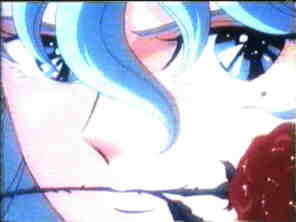 In
the Japanese culture, beauty is strongly associated to small, delicate,
slender, thin, calm and soft things. Just think about bamboo, rice paper,
ceramics, the very small eyes and mouth of gueixa, about their dolls and
miniatures, their flower arrangements. Everything beautiful is calm, small
and soft. This also applies to people: the ideal of Japanese classic beauty
are the gueixa, who are “molded" to be quiet and delicate, and correspond
more or less to the basic feminine figure throughout the world (I am not
saying that all the world expect women to be like gueixa, but we do use
to associate the concepts of "pretty", "small", "delicate", "soft" to the
feminine figure).
In
the Japanese culture, beauty is strongly associated to small, delicate,
slender, thin, calm and soft things. Just think about bamboo, rice paper,
ceramics, the very small eyes and mouth of gueixa, about their dolls and
miniatures, their flower arrangements. Everything beautiful is calm, small
and soft. This also applies to people: the ideal of Japanese classic beauty
are the gueixa, who are “molded" to be quiet and delicate, and correspond
more or less to the basic feminine figure throughout the world (I am not
saying that all the world expect women to be like gueixa, but we do use
to associate the concepts of "pretty", "small", "delicate", "soft" to the
feminine figure).
In manga
and anime we have the possibility of “creating” idealized people, just
like we want them to be (and therefore many "emotionally half-unstable"
people seem only to be able to fall in love with “bidimensional people”,
be they the “everything-goes” little dolls from hentai
(pornographic)
Japanese magazines or the Playboy magazine “babes”, only to mention the
most known cases). On these lines, manga and anime characters are drawn
to incarnate the virtues (or vices) more important to the unraveling of
the plot. If the most important feature of a character is to be strong,
he/she can be drawn in a more rustic mode, as for example, Goku in Dragonball
. And if a character is supposed
to be refined and beautiful, in order to inspire admiration and attraction,
he/she is generally drawn in accordance with the Japanese ideal of beauty
– that is, with delicate features that strongly approach the feminine figure
and, consequently, such male characters tends to androgyny, as it is the
case, for instance, of Marron in Bakuretsu Hunters.
as for example, Goku in Dragonball
. And if a character is supposed
to be refined and beautiful, in order to inspire admiration and attraction,
he/she is generally drawn in accordance with the Japanese ideal of beauty
– that is, with delicate features that strongly approach the feminine figure
and, consequently, such male characters tends to androgyny, as it is the
case, for instance, of Marron in Bakuretsu Hunters.
Social roles: strength and initiative
In a similar way, the ideas of strength, initiative, leadership and independence tend to be associated with the masculine figure, specially in Japan, where masculine and feminine social roles are still strongly differentiated. Due to an ancient culture of gender segregation, that practically did not interact in public, active women with "aggressive" attitudes still produce a certain astonishment - I also came lately to know that Mônica, a Brazilian comics girl character (a funny little girl with supernatural strength), was once forbidden in Japan many years ago, probably because a girl who goes around beating boys with her plush bunny would be considered "damaging to moral and good customs" (^ _ ^) (Disclaimer: Turma da Mônica stories and comics do not focus on subjects such as homosexuality or cross-dressing. The character was only mentioned here as an example of cultural shock).
But Mônica
already shows how women of strong personality and great initiative tend
to have "masculine features", such as short hair. The same happens in manga and anime: to accentuate the independence and
strength of some feminine characters and/or present them as different from
“ordinary women”, the artist often accentuates features that are usually
considered “masculine”, specially short hair and a harder facial expression.
The same happens in manga and anime: to accentuate the independence and
strength of some feminine characters and/or present them as different from
“ordinary women”, the artist often accentuates features that are usually
considered “masculine”, specially short hair and a harder facial expression.
Social marks: clothes and hair
Even if some "signs" seem to be universal in the acknowledgment of an individual as man or woman (as already said above, fragility and delicacy associated to women, strength and aggressiveness associated to men), each social group marks these papers (or not) by means of different things, clother among them.
In our Western society, deeply influenced by Christian-European culture, one will not find many differences in clothes of countries so diverse as, for instance, Brazil, Bolivia, Canada, Holland and Italy: we all have clear specifications for which clothes and hairdos can be sported by men in daily life and which by women:
Men are supposed to have short hair and to wear pants (either long or short), shirts or t-shirts, suits or coats, low-heeled shoes and no makeup. Currently more and more men are wearing jewelry, but it is usually very small and discrete; earrings, when worn at all, are usually small rings, spheres or stones, and only very seldom we see big, hanging ones or in both ears (I am talking about the AVERAGE here, folks! Of course there are always people who digress from the “norm”, but they are also socially marked. Just think of how many men have to take off their earrings when they go to work).
“Classic”
clothes for women are dresses or skirts and blouses. Despite the generalized
use of long or short pants and shirts/t-shirts in everyday 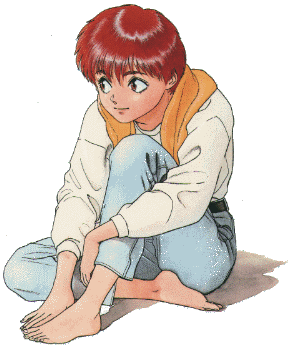 life
(when, during the work, women have become equal to men), the majority of
women “reverts” to dresses when in some party or solemnity, such as weddings,
for example. They are almost expected to wear very ostensible jewelry,
makeup and high-heeled shoes (and this is also the "uniform" of many working
women, depending on the company they work for or the position that they
hold). And for the great majority of people, long hair is the ultimate
symbol for femininity.
life
(when, during the work, women have become equal to men), the majority of
women “reverts” to dresses when in some party or solemnity, such as weddings,
for example. They are almost expected to wear very ostensible jewelry,
makeup and high-heeled shoes (and this is also the "uniform" of many working
women, depending on the company they work for or the position that they
hold). And for the great majority of people, long hair is the ultimate
symbol for femininity.
While women have started to adapt and wear masculine clothing and hairdo (since they went into the working market, which was before an exclusively masculine domain), we can see that, in daily life, it is not acceptable that men wear clothes considered feminine (but just think how frequently - and naturally - this happens in Carnival, when usual social rules are revoked). The few attempts of men to wear skirts in the Western world are restricted to Scots and some few male artists or men who want to mark their marginal position concerning the social rules.
 Kamatari,
from Samurai X/Rurouni Kenshin , says he had always had a female
soul and, therefore, he dresses like a woman.
Kamatari,
from Samurai X/Rurouni Kenshin , says he had always had a female
soul and, therefore, he dresses like a woman.
Thus, the
idea of “cross-dressers”, or people who wear clothes traditionally associated
to the opposing sex, is usually associated with marginality (which, by
the way, can be considered either good or bad, depending on one’s attachment
to current social values...). This is not restricted to Brazil or to European
culture, it happens in all social groups. However, when we have different
social marks in a meeting of cultures, understanding difficulties may arise.
In Japan, kimono was the traditional classic clothing, which is
in fact... a skirt, and it was worn both by men and women. Of course there
are big differences between masculine and feminine
kimono, but what
I want to say is that, for an Westerner, they always look like the same:
a skirt. In the humbler classes, when men and women had to work side by
side (for example, in the rice fields), both genders wore pants of virtually
the same model. Thus we see that Japan does not seem to have such a strong
tradition of “skirts for women, pants for men” as we do, and we can imagine
that the fact of a man wearing skirts is not so surprising for the Japanese
as it is for us. Culturally, Western fashion could be seen by the Japanese
as a kind of “fancy dress” they wear when they want to assume roles in
Western molds, as in today’s industry society, but it does not necessarily
mean that it carries the same value as in Western cultures. Just like our
men wear skirts at Carnival and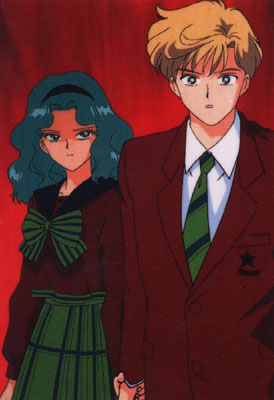 would not be ashamed to wear a kimono in a Japanese restaurant,
manga and anime characters do not think of themselves as "perverts" when
wearing clothes usually attributed to the opposite sex, either for practicality
(as does Haruka in the picture to the side, which we consider normal, since
our women also occasionally dress like men), as an artifice to attain their
goal (as when Zoicite disguises himself as Sailor Moon to attack Tuxedo
Mask or Bado in Patlabor dresses as an odalisque to flee from the
country) or just for the fun of it (as does Ruby Moon in Card Sakura
Captor – he is really male, but opted to wear the feminine school uniform,
dresses and skirts because “they were prettier”). The same goes for hair,
since for much time men and women in Japan had long hair (even if there
were differences in the way they were done).
would not be ashamed to wear a kimono in a Japanese restaurant,
manga and anime characters do not think of themselves as "perverts" when
wearing clothes usually attributed to the opposite sex, either for practicality
(as does Haruka in the picture to the side, which we consider normal, since
our women also occasionally dress like men), as an artifice to attain their
goal (as when Zoicite disguises himself as Sailor Moon to attack Tuxedo
Mask or Bado in Patlabor dresses as an odalisque to flee from the
country) or just for the fun of it (as does Ruby Moon in Card Sakura
Captor – he is really male, but opted to wear the feminine school uniform,
dresses and skirts because “they were prettier”). The same goes for hair,
since for much time men and women in Japan had long hair (even if there
were differences in the way they were done).
Not everything is what it seems
Thus, many
of the signs that we receive from characters of manga and anime are read,
in our society, as marks of a deviant social (and sexual) behavior. Men
are expected to be “rude”, “strong”, to disregard their looks, have short
hair, never to wear skirts or makeup, not to come physically close to other
men (except when celebrating goals in soccer... (~_^)) and also not to
show their feelings. Women are expected to be frantically concerned about
their looks, to have long, beautiful hair, to be fragile and timid and
to think all the time about how to get a man to protect them. 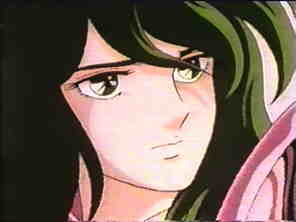 So,
when we meet male characters who have long hair, delicate features and
gentle behavior (as a symbol of their nature) or short haired women with
strong features and aggressive behavior (as marks of their strength of
mind) or cross-dressed characters (for whatever reasons), we immediately
identify them with what these signs mean in our society - homosexuality
- and with all the negative load that this concept has in Western Christian
society.
So,
when we meet male characters who have long hair, delicate features and
gentle behavior (as a symbol of their nature) or short haired women with
strong features and aggressive behavior (as marks of their strength of
mind) or cross-dressed characters (for whatever reasons), we immediately
identify them with what these signs mean in our society - homosexuality
- and with all the negative load that this concept has in Western Christian
society.
However,
even if this impression is often confirmed (because in manga and anime
there ARE homosexual characters, in contrast to the immense majority of
the corresponding Western stuff), it isn’t always true: most androgynous
characters are just... androgynous. But their looks are “dubious”, as a
consequence of the representation of their most important characteristic,
be it the concern for others’ welfare (as in the side picture, 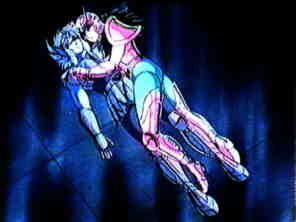 where Shun hugs Cygnus Hyouga to save his life by heating him with his
own body - certainly the scene shocked many people, but Shun is not gay
-, actually, I don’t think he even knows what sex is...), the egoistic
concern with one’s looks (as Misty or Aphrodite in Saint Seiya),
or just because of one’s personality (as Kurama in Yu Yu Hakusho -
although Karasu did harass him during the Makai tournament, there was no
indication that Kurama would have liked the attention...).
where Shun hugs Cygnus Hyouga to save his life by heating him with his
own body - certainly the scene shocked many people, but Shun is not gay
-, actually, I don’t think he even knows what sex is...), the egoistic
concern with one’s looks (as Misty or Aphrodite in Saint Seiya),
or just because of one’s personality (as Kurama in Yu Yu Hakusho -
although Karasu did harass him during the Makai tournament, there was no
indication that Kurama would have liked the attention...).
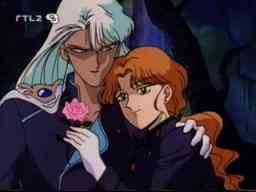
However,
many times the suspicion of homosexuality is openly confirmed, to our surprise
and desperation of censors and moral defenders. However, in order to understand
the reason for the presence of gay characters in manga and anime, we’ve
got to look for the reason for the ABSENCE of such characters in Western
comics and cartoons.
The weight of the religion
Well,
why is homosexuality so much feared in the Western society? Homosexuality
is normally considered an aberration, an illness, and a perversion. The
main argument for this point of view is that sex has reproduction as its
main function, thus, a homosexual pair would not be "fulfilling its biological
function" and therefore it would have to be discouraged. However, recent
researches on homosexuality in animal world show that stable homosexual
couples exist in some species and that their youngsters are raised as well
as those of heterosexual pairs (of course it is clear that, to conceive
the youngsters, the contribution of an individual of the opposite sex is
necessary, which is sometimes also integrated into the family). Thus, this
theory seems to have been proved false.
However, this is the official and fervently defended version of Christian Church. Sex is seen as a "sin" in any form that is not to generate children in a marriage approved and endorsed for said Church. Even contraceptive and other ways of preventing children are totally rejected by radical groups: "if you do not want to have children, do not make sex", seems to be their motto. In fact, it is true. But what to do when one goes into a sexual relationship for love and/or pleasure? One may not be able to raise all the children that would spring of these meetings. And what about barren couples? Would they do not have the right to have sex? (Really, according to the more radical doctrines, a marriage does not have another purpose but to generate children and, thus, such marriages could also be made void).
Well, this narrow vision of sex (and here may radical Christians excuse me, but this is MY opinion, I am not saying that it is the right or best one, but I have a right to it. If you do not like what you are reading, you just have to browse to another page that pleases you more) pronounced as improper any form of relationship that has something to do with sex but does not result in children, such as homosexuality, and that is the cause for this taboo in our current society. A taboo is something that exists, but is not spoken of in public and is hidden to a maximum extent, so that its mere mention would not "corrupt the simple minded". That is why homosexuality simply is banished of everything that has to do with “children” in the media.
However,
other, non-Christian societies do not have this preconception  so strongly ingrained. It is clear that homosexual couples were never well
seen due to the fact that they do not generate children and, thus, do not
contribute with more arms for working and paying taxes, but they are usually
better tolerated that in Western society. I have also read once that, in
some regions of old China, there were official cases of marriages between
male homosexuals, as long as they also kept a “concubine” so that children
could be generated. Without the radical position of the Christian doctrine,
it is easy to understand why Eastern societies are less prejudiced against
homosexuality.
so strongly ingrained. It is clear that homosexual couples were never well
seen due to the fact that they do not generate children and, thus, do not
contribute with more arms for working and paying taxes, but they are usually
better tolerated that in Western society. I have also read once that, in
some regions of old China, there were official cases of marriages between
male homosexuals, as long as they also kept a “concubine” so that children
could be generated. Without the radical position of the Christian doctrine,
it is easy to understand why Eastern societies are less prejudiced against
homosexuality.
Moreover,
in societies where there is greater gender segregation, homosexuality is
naturally more present and, consequentially, better tolerated. We can see
it in the case of Ancient Greece: women were confined to the feminine quarters
and only very seldom were permitted to mingle with men. Men, in turn, considered
women as mere procreators. Social life was really a privilege of men and,
consequently, male homosexual relationships (male homosexuality,
mind you, since the poetess Sappho from the Island of Lesbos - hence the
word “lesbian” – has never been well seen by that society) were the standard
to be reached. It was then said that the only true love was the homosexual
one, since heterosexual relationships had the sole purpose of generating
children! It is incredible as our society kept the myth of the perfection
of classic Greek society as the basis for our Western mentality, but has
completely purged this aspect from history books...
Well, the important thing here is to show that, as well as in Old Greece, traditional Japanese society also only saw women as breeders and kept them strongly separated from men, and that favored homosexual relationships, as much between men as between women. In a certain way, many a "strong friendship" between people of the same sex that can be seen in many manga and anime really has a deep "platonic homosexual" streak (as in the case of Tomoyo’s admiration for Sakura in Sakura Card Captors ), that is not so badly seen in Japanese society.
The real world
These
two reasons are, in my opinion, the strongest to explain the constant presence
of homosexual characters in manga and anime. But we can still present two
more:
The first one is the fact that manga and anime plots and characters are made to try and identify themselves the most possible with the readers/audience and their reality. Thus, as there really ARE homosexuals in the world (although many people do not to like the fact), they HAVE to be represented in the works so that they can identify themselves with them. And even heterosexuals have gay friends or acquaintances, and their presence in manga and anime contributes so that they recognize, in the stories, the world of which they are part (including the presence, although less common, of lesbians couples, as in Sailor Moon S).
The second
reason is related to the manga/anime style known as shoujo, or manga/anime
for girls. The great majority of authors and public of this style are women
and there are always many gay or androgynous characters in their stories.
There may be two reasons for that. The first one, as pointed by Webmistress
Lizzard in the text quoted below, is that thus we have pretty but unattainable
male characters. This defines their status
in the plot, and therefore
women can interact more freely with them, without the risk of a love involvement,
creating greater dramatic possibilities. 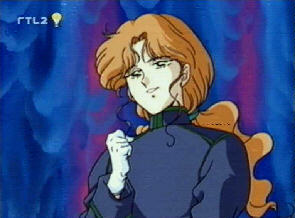 The second reason would be a possibility for identification between the
female readers and male gay characters. As I’ve already said before, the
expected behavior of a woman in Japan is still strongly marked by passivity
and fragility, and that inhibits the presence of more aggressive female
characters (just think of the Mônica-problem...). Thus, female readers
could also “project themselves” in gay male characters, which would allow
them to act in a more active and aggressive manner in the sexual sphere,
but also to keep the feminine attributes and to be still attracted to men.
The second reason would be a possibility for identification between the
female readers and male gay characters. As I’ve already said before, the
expected behavior of a woman in Japan is still strongly marked by passivity
and fragility, and that inhibits the presence of more aggressive female
characters (just think of the Mônica-problem...). Thus, female readers
could also “project themselves” in gay male characters, which would allow
them to act in a more active and aggressive manner in the sexual sphere,
but also to keep the feminine attributes and to be still attracted to men.
Whatever the reason, the frequent presence of gay characters in manga and anime always has influence on the plot and any modification of this feature ends by depreciating its artistic value.
Luckily,  Brazilian television is still more "open minded" about the subject as in
many other countries. In the U.S.A., for example the subject of (homo)sexuality
in anime series is very problematic, resulting in frequent sex changes
or occultation of the relationships, as for example, the fact that Bado
in
Patlabor and Zoicite and
Brazilian television is still more "open minded" about the subject as in
many other countries. In the U.S.A., for example the subject of (homo)sexuality
in anime series is very problematic, resulting in frequent sex changes
or occultation of the relationships, as for example, the fact that Bado
in
Patlabor and Zoicite and  Fisheye
from Sailor Moon have been transformed into women, the first one
for looking exceedingly girlish, and the two latter because they were openly
gay (the Brazilian version followed the American one in the case of Zoicite
and Bado, but it respected Fisheye’s “masculinity”).
Fisheye
from Sailor Moon have been transformed into women, the first one
for looking exceedingly girlish, and the two latter because they were openly
gay (the Brazilian version followed the American one in the case of Zoicite
and Bado, but it respected Fisheye’s “masculinity”).
I will now transcribe a text from the site In Defense of Sailor Moon Super S, where we have a very clear opinion on the problem. On the specific case of Fisheye’s sex change in the American version, Webmistress Lizzard writes:
"Fish Eye is indeed a male. A gay transvestite male, in fact -- or at least someone who gets a kick out of occasionally playing the girl.Gay characters, especially gay males, are quite common in anime. Shoujo anime is particularly prone to sport droves upon droves of gorgeous but unattainable gay men. This is not to say that the sexual activity is shown. The characters just... are. Sometimes this is used to add drama to the plot, sometimes it is used to comedic effect, and sometimes it's just a character feature, no more nor less important than the color of the person's hair.In Sailor Moon alone, there are at least four central characters who are gay -- Zoicite, Fish Eye, Uranus, and Neptune. The English translators are having a heck of a time adapting these characters for American television. For the purposes of the dub, they made Uranus and Neptune cousins. The girlish-looking Zoicite was actually turned into a woman. When the Super S dub airs, I bet the same fate will befall Fish Eye. (Note: I was right.)It's not that Japanese television is extraordinarily progressive. It's that American television is extraordinarily conservative. Homosexuality on American TV is more or less limited to adult hours and adult shows. Very few series actually have recurring gay characters, and those that do tend to die off earlier than they should. Just look at what happened to the sitcom Ellen. The series was canceled not long after the titular character came out of the closet. Was it due to ratings? Was it due to complaints from viewers? Was it due to judgmental television executives who wanted to distance themselves from homosexuality? Probably a little of each. So it should come as no surprise that US television is afraid to depict gays in animated series.I may not personally find homosexuality disturbing or offensive, but far be it for me to say that American television isn't doing the best it can in the current cultural climate."
This
does not happen only in the U.S.A.: for example, Kurama was also turned
into a woman in the Philippines (poor thing...). I do not want here to
censure American TV or any another country’s, I only wanted to show that
censorship on sexuality issues in anime does exist and that it is very
active. It is difficult to say when the artistic boundaries are transgressed
and something deteriorates into bad-taste or “amorality”, or how much cultural
characteristics can or should be adapted when artistic products are presented
to other cultures. However, we know that most anime series are, in their
original context, dedicated to a “all audiences” public, since they are
also shown in open TV.
In my opinion, the question of homosexuality in anime series is shown in
so “light” a mode (the most explicit scene I’ve ever seen, Fisheye’s kiss
in Darien, that you can see in this picture, is not even shown openly),
that “children” do not pay much attention to it: they understand that the
character in question is “sort of strange”, but usually do not attribute
any values to him. And when somebody is sufficiently “adult” to perceive
the presented sexual question, well, then it is already time for him/her
to think about and to discuss the subject. It is up to each person and
to their parents or guardians to talk on the subject in the most convenient
way under the point of view of their beliefs, whatever they are. What I
cannot passively do is to see that “censors” have previously stolen from
the audience the possibility of seen different points of view, culturally
diverse from theirs. If the Arabian burka bothers people so much,
why does they do not bother about manipulations of their rights to free
speech and access to information?
Contact Elbereth! Comments are welcome!